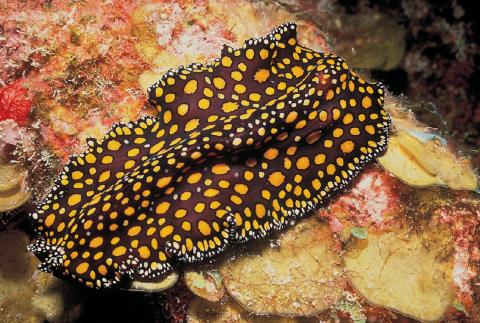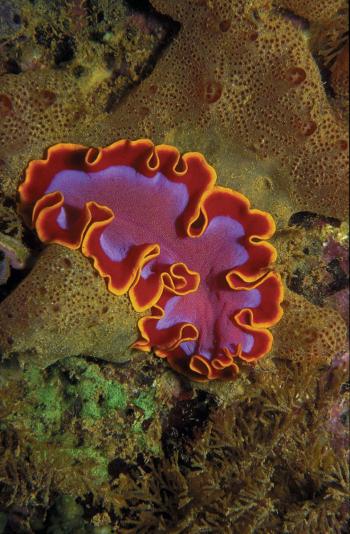
Marine flatworms can dazzle with wild colors and patterns – if you’re lucky enough to see one. They live from the intertidal to tropical coral reefs to deep water. The free-living flatworms (polyclads) have thin, almost leaf-like bodies and move with a gliding motion. Their ancestors were some of the first bilateral animals, and being bilateral gives them a body plan designed for an active life style.
On the Shape of Life, we call the flatworm phyla video "First Hunter," and indeed these animals are active carnivorous predators that feed on a wide variety of animals including copepods, isopods, limpets, barnacles, tunicates, and bryozoans. How do these simple animals sense their world in order to hunt? On the flatworm’s head are eyespots (mostly a pair, sometimes more). This type of eye, which lacks a lens, has photosensitive cells and gives the worm a sense of where light is coming from. Signals from the eyespot are sent to the paired cerebral ganglia.

Flatworms also have "auricles" that project from the side of the head. These auricles contain chemoreceptors that are used to find food. Since their eyesight is rudimentary, smell seems to be the main way the worms sense their natural habitat. Having the sensory system on both sides of the head allows a flatworm to easily locate its prey.
All are hermaphrodites: they are both male and female, so reproduction can be complicated .
Those brightly-colored bodies? It’s “conspicuous coloration,” which in the animal world is often associated with a warning of the presence of toxic or distasteful defense substances.
And the images below are from our website, Flatworm Resources
Here is a primer for students about marine flatworms.
You can see images of flatworms from all over the world here.















